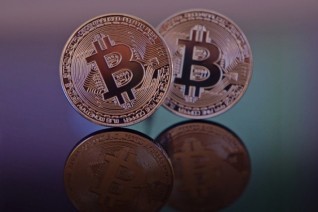📉 Is Bitcoin in a Dangerous Bubble?
Separating Hype from Reality in the World’s Most Controversial Asset
Every time Bitcoin’s price surges — whether it’s breaking $50,000, $70,000, or beyond — the same question echoes across financial headlines:
“Is Bitcoin in a dangerous bubble?”
Critics point to its wild volatility, lack of intrinsic value, and speculative frenzy as signs of an inevitable crash. Supporters argue that Bitcoin is digital gold, a hedge against inflation, and the foundation of a new financial system.
So, is Bitcoin a bubble? Or is it the beginning of a financial revolution? Let’s dive deep into the data, history, and fundamentals to find out.
🔁 Bitcoin’s History: Boom, Bust, and Repeat
Bitcoin has experienced multiple boom-and-bust cycles since its inception:
Each time, mainstream media declared “the end of Bitcoin.”
Each time, Bitcoin came back — stronger, more adopted, and more resilient.
This pattern isn’t random. It’s part of Bitcoin’s maturation cycle, driven by halvings, institutional adoption, and growing global awareness.
🧠 What Is a "Bubble"?
A financial bubble occurs when an asset’s price rises far above its intrinsic value due to speculation, FOMO (fear of missing out), and herd behavior — not fundamentals.
Classic examples:
- Tulip Mania (1637) – Bulbs sold for years of salary
- Dot-com Bubble (2000) – Startups with no revenue valued at billions
- Housing Bubble (2008) – Subprime loans inflated home prices
But not all rapid price increases are bubbles — especially when accompanied by real adoption and utility.
📊 Is Bitcoin a Bubble? Let’s Look at the Data
✅ Arguments For a Bubble
- Extreme Volatility: Bitcoin can swing 20–30% in a single week.
- Speculative Trading: Many buy purely for short-term gains, not long-term use.
- Media Hype: Celebrities, influencers, and memes drive FOMO (e.g., “Bitcoin to $1M!”).
- Leverage Risk: Futures markets and margin trading amplify price swings.
✅ Arguments Against a Bubble
- Fixed Supply: Only 21 million BTC will ever exist — scarcity drives value.
- Institutional Adoption: BlackRock, Fidelity, MicroStrategy, and Tesla now hold Bitcoin.
- Global Demand: Used as a hedge in inflation-ravaged countries (Argentina, Turkey, Nigeria).
- Real Utility: Powers decentralized finance (DeFi), remittances, and borderless payments.
- Network Security: Billions in mining power protect the blockchain — not a “fake” system.
📌 Key Insight: Bitcoin behaves like a bubble during rallies — but its underlying technology and adoption suggest it’s more than just speculation.
🔍 What’s Different This Time?
The 2024–2025 cycle isn’t like 2017 or 2021. Several fundamental shifts have changed the game:
1. Bitcoin ETFs Are Live
- The U.S. SEC approved spot Bitcoin ETFs in 2024.
- Now, anyone with a brokerage account can invest — no crypto wallet needed.
- Result: Institutional money is flooding in.
2. The 2024 Halving
- Every 4 years, Bitcoin’s block reward halves — cutting new supply in half.
- Last halving: April 2024 (from 6.25 BTC to 3.125 BTC per block).
- Historically, halvings lead to major bull runs 6–18 months later.
3. Global Regulatory Clarity
- Countries like the U.S., UK, and EU are creating clear crypto rules.
- This reduces uncertainty and attracts long-term investors.
4. Corporate Balance Sheets
- Over 100 public companies now hold Bitcoin as a treasury asset.
- Not speculation — it’s a strategic reserve.
🌍 So… Is It a Bubble? The Verdict
Short answer: Bitcoin feels like a bubble during rallies — but it’s not a classic bubble in the traditional sense.
It’s more accurate to call it a transformational asset in a volatile growth phase.
Think of it like the early internet:
- In 1999, dot-com stocks looked like a bubble (they were — for many).
- But the internet itself wasn’t a bubble — it was the future.
- Those who survived the crash made generational wealth.
Bitcoin may crash 50–80% again — it probably will.
But the network will keep running. The miners will keep securing it.
And the next cycle will begin.
💡 How to Navigate the Volatility
If you’re worried about a bubble, here’s how to invest wisely:
1. Don’t Go All-In
- Never invest more than you can afford to lose.
- Treat Bitcoin as a high-risk, high-reward portion of your portfolio (5–10%).
2. Dollar-Cost Average (DCA)
- Buy small amounts regularly — $50/week, $200/month.
- Reduces the risk of buying at the top.
3. Mine, Don’t Just Buy
- Instead of buying Bitcoin outright, earn it through mining.
- Platforms like XMiner let you accumulate BTC daily — even during dips.
- You profit from price rises and consistent mining output.
4. Hold Long-Term
- The biggest gains come to those who HODL through the storms.
- 5-year holders have never lost money (as of 2025).
🏁 Final Thought: Bubbles Pop. Networks Grow.
Yes, Bitcoin is volatile.
Yes, it attracts speculation.
And yes — there will likely be a correction.
But a crash doesn’t mean the end. It means the weak hands exit, and the real believers double down.
Bitcoin isn’t just a price. It’s a decentralized, secure, global monetary network — the first of its kind in human history.
Whether it’s in a bubble or not, one thing is clear:
Bitcoin is here to stay.
🔮 The Smart Way to Participate? Start Mining.
Instead of chasing price swings, why not earn Bitcoin every day — regardless of market mood?
👉 With XMiner, you can:
- Mine Bitcoin 24/7 using solar-powered, AI-optimized cloud rigs
- Get daily payouts — no matter what the price does
- Scale your mining power as you grow more confident
You don’t need to predict the market. You just need to be in it.
Start Mining Today. Build Wealth Tomorrow.





